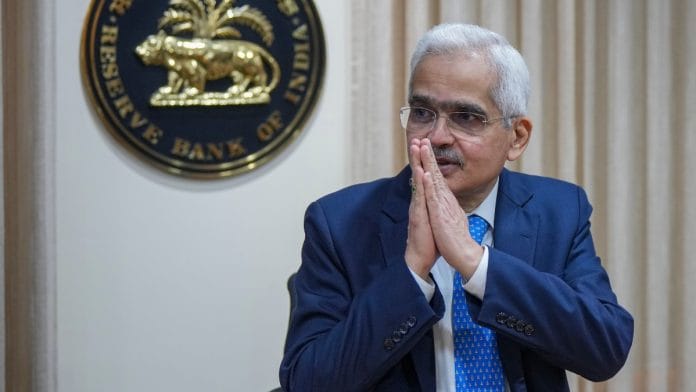New Delhi: Reserve Bank of India Governor Shaktikanta Das put to rest Thursday any speculation that the central bank and its interest rate-setting committee would exclude food price movements when it targets inflation.
This speculaton arose following the Economic Survey’s release last month, as it had postulated that monetary policy measures might not be the most effective tool to bring down food inflation, and so such tools should instead focus on non-food inflation.
While announcing the RBI Monetary Policy Committee’s (MPC) decisions Thursday, Das said the central bank’s priority was to bring down overall inflation, in which food inflation had a weight of 46 percent.
“With this high share of food in the consumption basket, food inflation pressures cannot be ignored,” he said. “Further, the public at large understands inflation more in terms of food inflation than the other components of headline inflation. Therefore, we cannot and should not become complacent merely because core inflation has fallen considerably.”
He also made the point that high food inflation has a negative impact on households’ inflation expectations, which then goes on to have an adverse impact on the actual inflation levels in the future.
Put another way, high food inflation leads households to believe that prices will stay high or rise further in the future, which then often leads to this actually happening.
“Persistently high food inflation and unanchored inflation expectations — if they materialise — could lead to spillovers to core inflation through pick-up in wages on cost-of-living considerations,” Das said.
This, in turn, could be passed on by firms in the form of higher prices they charge customers, especially in a scenario of strong aggregate demand.
Finally, he argued that these behavioural changes could result in overall inflation becoming sticky or resistant to quick change, even after food inflation eases.
“The MPC may look through high food inflation if it is transitory; but in an environment of persisting high food inflation, as we are experiencing now, the MPC cannot afford to do so,” he said.
Also read: ‘Wait and watch’: RBI leaves interest rates unchanged for 9th time, projects growth at 7.2%
Problem with targeting food inflation
To be fair, the Economic Survey — prepared by chief economic advisor V. Anantha Nageswaran — was not saying that food inflation should be ignored. Instead, it argued that only the government had the tools to tackle it, and not necessarily the central bank.
“When central banks in developing countries target headline inflation, they effectively target food prices,” the survey said. “So, when food prices rise, inflation targets come under threat.”
“Therefore, the central bank appeals to the government to bring down the increase in the prices of food products,” it added. “That prevents farmers from benefiting from the rise in terms of trade in their favour. India’s inflation-targeting framework should consider targeting inflation, excluding food.”
Higher food prices, it argued, are more often the product of supply-side factors rather than demand-side ones.
“Short-run monetary policy tools are meant to counteract price pressures arising out of excess aggregate demand growth,” it noted. “Deploying them to deal with inflation caused by supply constraints may be counterproductive.”
It further said that hardship caused by higher food prices for poor and low-income consumers can be handled through government intervention, such as direct benefit transfers or coupons for specified purchases valid for the required durations.
In addition, the government can implement several other measures — such as increasing the net irrigated area and aligning farming to climatic conditions — to increase the overall supply of food in the country, and thereby address food inflation.
(Edited by Tikli Basu)






